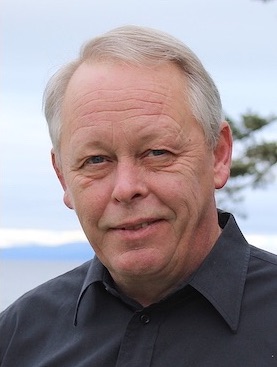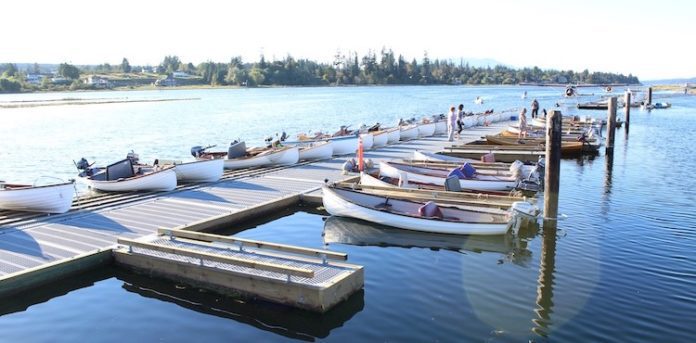Island Fisherman Magazine Opinion Editorial: Neil Cameron

Yes, size matters.
When DFO reduced the size of a sport-caught Chinook to 80 cm, it made people in the fishing and tourism economies gape like a newly hooked lingcod. And that draconian measure came after a total ban of several weeks. Both decision(s) were to protect Fraser River salmon that are facing an impassable blockage in their natal river system. Larger fish apparently can get by the blockage, the smaller ones can’t. Hence the size restriction virtually coast-wide.
It’s affected the sports fishery and tourism. Yet I harken back to tales of yore when Campbell Riverites would say, “I’d rather eat a 10-pound spring than a Tyee.” Despite that, monetary pain has been intense.
A deeper issue, because of its multi-value – tourism, science and historical – affects on Campbell River, are deeper and more intrinsic.
But the effects on the Campbell River go deeper than that. I am a member of the Tyee Club of British Columbia. I was accepted because I happened to be lucky enough to bring to net a fish of 34 lb under Tyee Club regulations, after being rowed by local guide and fishing scribe Jeremy Maynard.
Membership was that simple for a club that is nearing its 100th anniversary. Background check? No. I would have failed. Alcohol consumption? For heaven’s sake it was around 7 in the morning! Okay, I would have failed. Drug test? What year was it again?
I am not a member of the board; I have no influences in that regard. In fact, I don’t think I have voted at one single meeting of the Tyee Club. I guess that makes me a normal Canadian. So I’m both a part and not a part of the club.
I hope that DFO, if things persist as they currently are, can grant the Tyee Club fishing area in Campbell River a reprieve.
Of the three vital aspects of the Tyee Club—tourism, science and history—science is of the most essential. Yes, we can suffer through lower tourism revenue. Yes, history will simply mark this as a blip in the records. But we simply can’t leave the science out there.
Without the Quinsam hatchery, the Campbell River and Quinsam River Chinook salmon runs would be lost. This facility has provided a life support system for two rivers (and two or three creeks) that have been ravaged my mining, forestry, and hydroelectric projects.
And part of that support came from the data provided by the Tyee Club.
The Chinook of the Campbell and Quinsam rivers have a unique propensity for holding off the river mouth for weeks before heading up river to spawn. It is a unique occurrence, I believe, for the entire coast of British Columbia. It is what I believe is called a terminal fishery, where the results are so devoid of variables that science can be screwed down several fold.
I do not believe Fraser River Chinooks, or Chinooks from any other system for that matter, would pause more than an olfactory second at the mouth of the Campbell River.
The Tyee Pool, Frenchman’s Pool, The Corner, The Rivermouth, The Cemetery Pool, The Potlach Pool, The Can, Neil’s Swimming Pool, The Earthquake Pool, and even the Argonaut Wharf Pool—all within a mile or so of each other—would not be of interest to any salmon not of Campbell or Quinsam origin.
I don’t know what DFO is planning after their current 80 cm regime ends July 31, or if it does end. But I would speak for science and suggest that DFO create an exception for the Tyee Pool.
This may sound elitist. But elitism is about the blessed getting easy and unfettered access to a harvest of either monetary or otherwise beneficiary results. To participate in an almost 100-year-old tournament, the rules of which haven’t really changed, is not elitism. It is insanity. So 50 to 60 boats go out for an evening tide. If one lands a Tyee it is a success. Recently one to 10 undersized are also taken. Then there are those evenings, those afternoons, and those mornings when absolutely nothing happens.
Last year the Tyee Club took about 25 Chinooks of 30 lb or more. That’s out of a run of between 7,000 and 9,000 fish. Who knows how many 30-plus pounders there were they didn’t hook?

The heads from those Tyees that were caught, and along with those from smaller salmon, provide the hatchery with invaluable information.
A few years ago the hatchery began a program that involved fertilizing eggs and milt from big fish with other big fish. This could be the year when the first year of that experiment turns a 3- or 4-year-old salmon into one of more poundage. Trends indicate the average size of a Chinook salmon is dropping coast-wide.
Could DFO really put at peril such vital information, economic benefits, and historical significance for the sake of a Fraser whose only real concern is if the Campbells are stealing his sheep?
Disclaimer: The views and opinions expressed in Island Fisherman Magazine Opinion Editorial (IFM Op-Eds) are those of the author, and do not necessarily reflect the opinion of Island Fisherman magazine. If you’re interested in writing an IFM Op-Ed, please send an email to [email protected] or visit Letters To The Editor.







I wonder what an abundance of herring, throughout the West Coast, would do to help ensure a return of the Chinook Salmon. I am not sure if this is something the herring fishing Master, Jimmy, would support.